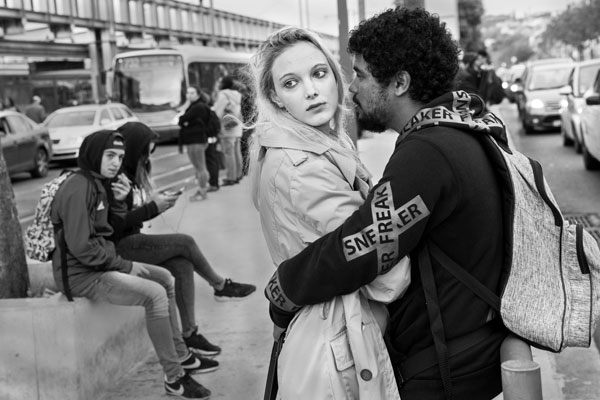Framing Streets - Truths
Framing Streets - Truths
Blog Article
Getting My Framing Streets To Work
Table of ContentsNot known Details About Framing Streets Examine This Report about Framing StreetsNot known Details About Framing Streets Framing Streets Things To Know Before You BuyThe 6-Second Trick For Framing StreetsThe Greatest Guide To Framing Streets
Photography style "Crufts Pet Show 1968" by Tony Ray-Jones Street digital photography (likewise sometimes called candid photography) is digital photography performed for art or inquiry that features unmediated chance encounters and random incidents within public locations, normally with the goal of catching photos at a crucial or poignant minute by mindful framing and timing. 
Top Guidelines Of Framing Streets
Susan Sontag, 1977 Street photography can concentrate on people and their behavior in public. In this regard, the road professional photographer is comparable to social documentary digital photographers or photographers who likewise function in public locations, yet with the purpose of catching newsworthy occasions. Any of these digital photographers' images might catch people and residential property visible within or from public areas, which usually requires browsing ethical concerns and legislations of personal privacy, security, and building.
Representations of everyday public life develop a category in virtually every duration of globe art, starting in the pre-historic, Sumerian, Egyptian and early Buddhist art durations. Art handling the life of the street, whether within sights of cityscapes, or as the dominant theme, shows up in the West in the canon of the North Renaissance, Baroque, Rococo, of Romanticism, Realism, Impressionism and Post-Impressionism.
The Only Guide for Framing Streets
Louis Daguerre: "Blvd du Holy place" (1838 or 1839) In 1838 or 1839 the first picture of numbers in the road was tape-recorded by Louis-Jacques-Mand Daguerre in one of a set of daguerreotype views taken from his workshop window of the Blvd du Temple in Paris. The second, made at the height of the day, shows an unpopulated stretch of road, while the other was taken at regarding 8:00 am, and as Beaumont Newhall records, "The Blvd, so constantly loaded with a relocating crowd of pedestrians and carriages was flawlessly solitary, except a person that was having his boots combed.
, that was motivated to take on a comparable documentation of New York City. As the city developed, Atget aided to advertise Parisian roads as a worthy subject for photography.

10 Simple Techniques For Framing Streets
Martin is the very first recorded professional photographer to do so in London with a masked cam. Mass-Observation was a social research organisation established in 1937 which intended to record day-to-day life in Britain and to tape-record the responses of the 'man-in-the-street' to King Edward VIII's abdication in 1936 to wed separation Wallis Simpson, and the succession of George VI. The chief Mass-Observationists were anthropologist Tom Harrisson in Bolton and poet Charles Madge in London, and their first report was created as guide "May the Twelfth: Mass-Observation Day-Surveys 1937 by over 2 hundred observers" [] Home window cleaner at Kottbusser Tor, Berlin, by Elsa Thiemann c. 1946 The post-war French Humanist Institution digital photographers found their topics on the road or in the diner. In between 1946 and 1957 Le Groupe des XV every year showed job of this kind. Andre Kertesz. Circus, Budapest, 19 May 1920 Street digital photography created the major web content of two exhibits at the Gallery of Modern Art (Mo, MA) in New york city curated by Edward Steichen, Five French Digital Photographers: Brassai; Cartier-Bresson, Doisneau, Ronis, Izis in 1951 to 1952, and Post-war European Digital Photography in 1953, which exported the concept of street photography globally.

The Ultimate Guide To Framing Streets
The recording equipment was 'a surprise video camera', a 35 mm Contax concealed beneath his coat, that was 'strapped to the upper body and attached to a long cable strung down the ideal sleeve'. His work had little contemporary impact as due to Evans' sensitivities concerning the creativity of his project and the personal privacy of his subjects, it was not published until 1966, in the publication Many Are Called, with an introduction created by James Agee in 1940.
Helen Levitt, after that a teacher of little ones, connected with Evans in 193839. She recorded the transitory chalk illustrations - vivian maier that became part of children's road culture in New york city at the time, in addition to the kids that made them. In July 1939, Mo, MA's brand-new photography section consisted of Levitt's job in its inaugural exhibitionRobert Frank's 1958 publication,, was considerable; raw and frequently out of focus, Frank's pictures questioned mainstream photography of the time, "tested all the formal policies laid down by Henri Cartier-Bresson and Walker Evans" and "contradicted the wholesome pictorialism and wholehearted photojournalism of American magazines like LIFE and Time".
Report this page